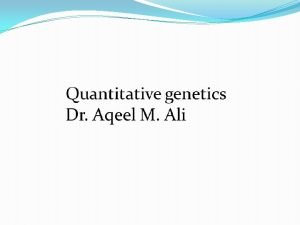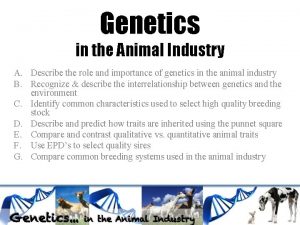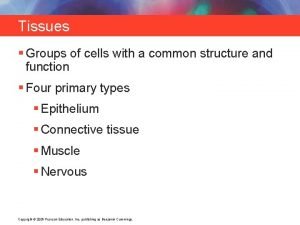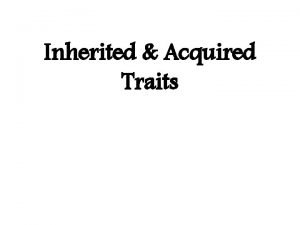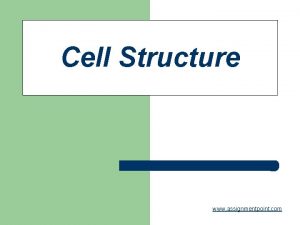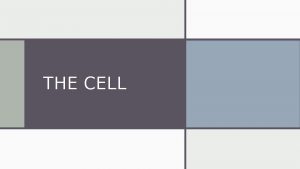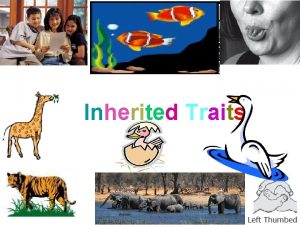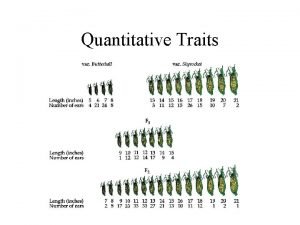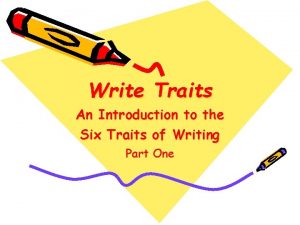Cell Structure COMMON CELL TRAITS A cell is















- Slides: 15

Cell Structure

COMMON CELL TRAITS A cell is the smallest unit that is capable of performing life functions. Animal Cell Plant Cell Bacterial Cell In your NB, create a T chart to list the major structures found in each cell. Which cells are prokaryotes and eukaryotes? How do you know?

CELL WALL protects the cell gives shape is made of cellulose A cell wall is found in plants, algae, fungi, & most bacteria.

CELL MEMBRANE Outer covering, protective layer around ALL cells For cells with cell walls, the cell membrane is inside the cell wall Allows food, oxygen, & water into the cell & waste products out of the cell.

CYTOPLASM gelatin-like inside cell membrane constantly flows

NUCLEUS Directs all cell activities Contains instructions for everything the cell does These instructions are found on a hereditary material called DNA Usually the largest organelle

Quick Check! Match the cell part to the job is does: A. Controls the cell B. Outer protective layer - in plants, not animals C. Controls what enters and leaves the cell D. Fills the cell, allowing chemical reactions to occur 2 1 3 4

MITOCHONDRIA Organelles that release energy from food This energy is released by breaking down food into carbon dioxide AKA the powerhouse b/c they release energy from food Some muscle cells have 20, 000 mitochondria

VACUOLES Temporary storage spaces Store food, water, waste Plant cells usually have larger vacuoles than animal cells

CHLOROPLASTS Green organelles that make food found only in plant cells

CHLOROPHYLL Found in chloroplasts A green pigment that gives leaves & stems their color Captures sunlight energy that is used to produce food called glucose Glucose is a type of sugar

Quick Check! Match the cell part to the job is does: A. Green pigment that traps light energy in plants B. Storage compartment C. Release energy for cell D. Organelle that holds chlorophyll for food production in plants 2 green material that fills the chloroplast 1 structure that holds chlorophyll 4 3

NAME THE ORGANELLE a. Nucleus b. Chloroplast c. Vacuole d. Mitochondria

Compare Plant and Animal Cells Create a Venn Diagram to compare and contrast a typical Plant and a typical Animal cell. You must include the following: cell wall, cell membrane, cytoplasm, nucleus, , mitochondria, vacuoles, chloroplast, chlorophyll. Animal Cell Plant Cell

2 1 3 4 5 1 - Nucleus 3 - Chloroplasts 2 - Mitochondria 4 - Ribosomes 4 - Vacuoles 7 - ER 5 - Cell Membrane
 Qualitative traits vs quantitative traits
Qualitative traits vs quantitative traits Qualitative traits vs quantitative traits
Qualitative traits vs quantitative traits Qualitative traits vs quantitative traits
Qualitative traits vs quantitative traits Common character traits
Common character traits What is the greatest common factor of 12 and 42
What is the greatest common factor of 12 and 42 Common anode and common cathode
Common anode and common cathode Hcf 60 and 72
Hcf 60 and 72 Factors of 54
Factors of 54 Lcm of 6 and 12
Lcm of 6 and 12 Multiples of 9 and 21
Multiples of 9 and 21 Muscle tissue parts
Muscle tissue parts Covalent bond boiling point
Covalent bond boiling point Union myunion structure my structure
Union myunion structure my structure Ionic covalent metallic
Ionic covalent metallic Structural ambiguity examples
Structural ambiguity examples Deep and surface structure
Deep and surface structure

